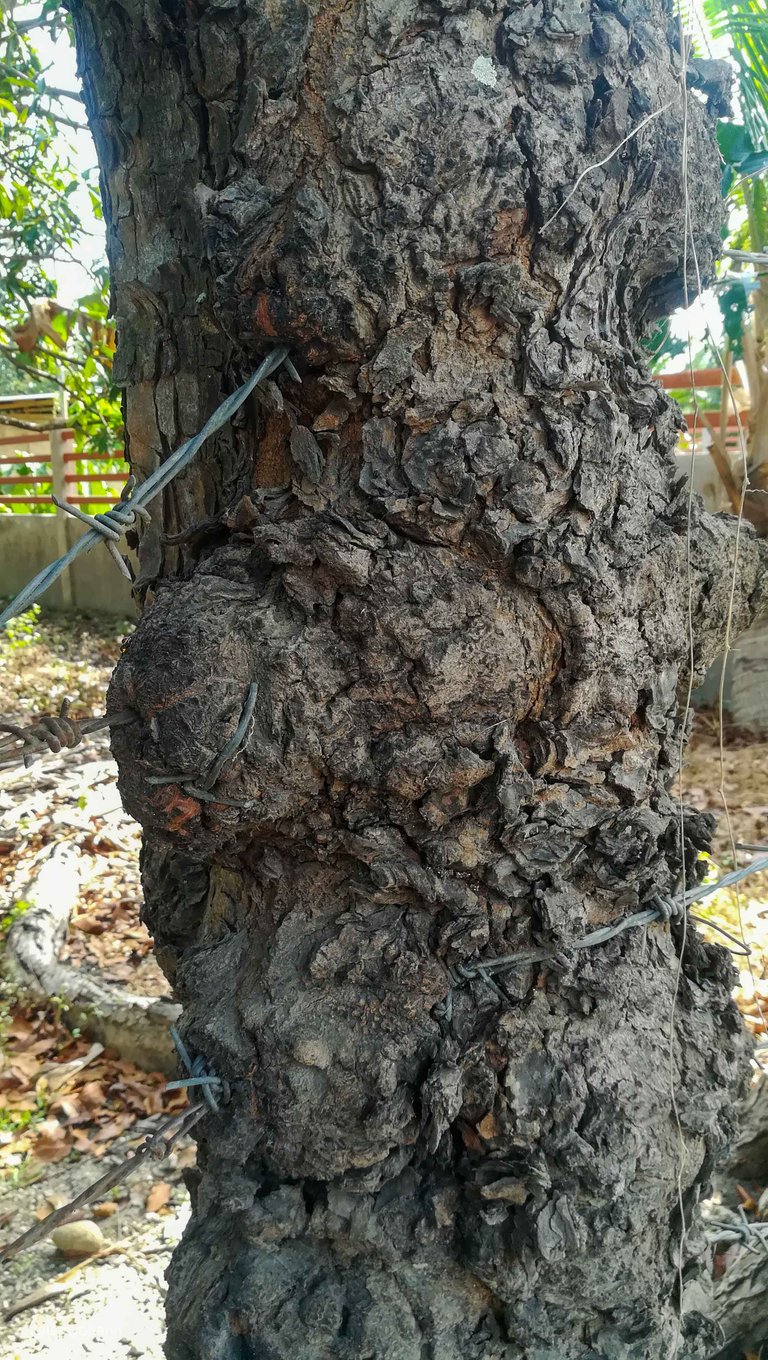
I needed to buy some vegetables today and so I headed to my usual stall right on the side of the street. A lot of my friends tend to also purchase from this place. The products are usually of good quality and the lady is nice and fair when it comes to prices. Recently, a young man started helping her. I'm not sure if she hired him or if he's a family member helping her though.


Anyways, once I was done with my market, I loaded it all on the scooter, and as I was about to leave, I noticed something about the fence on the adjacent lot. It is made of several horizontal rows of barbwire, but the thing is, there are not posts. The wires have been nailed to the trees bordering the land. I have no idea how long ago this was done, but seeing how the trees have "swallowed" the barbwire, and how this latter is a bit rusty in some parts, I'd say it must have been a few years.
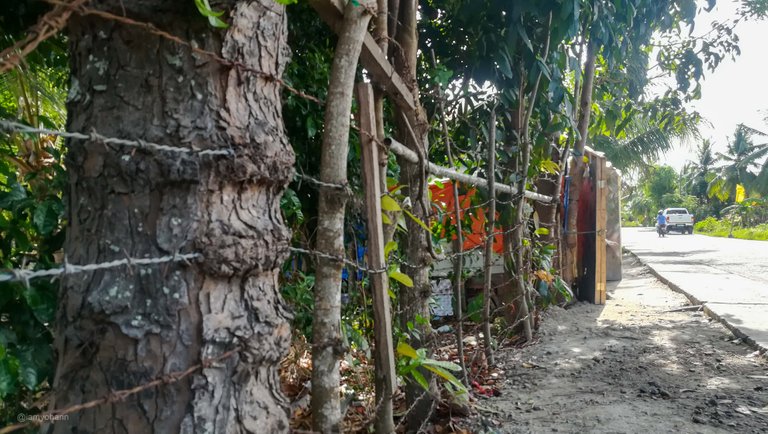
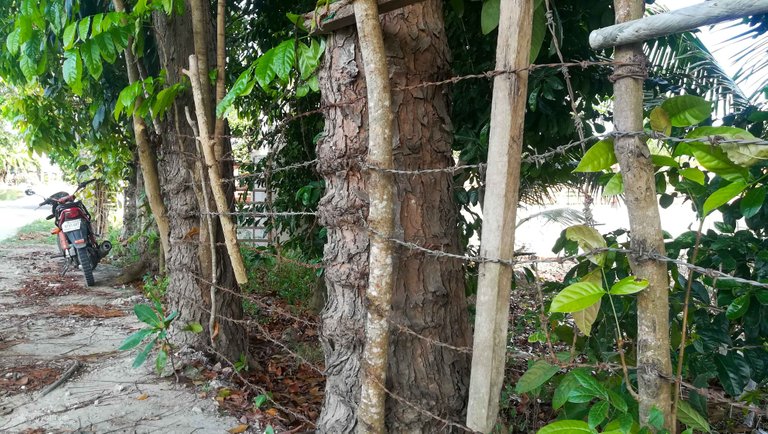
I understand that nailing the fence to the existing trees was most likely more convenient and cheaper than installing posts but from my point of view, it's wrong. I'm aware not everybody will agree with me and there could be a whole debate about it. In this case, I just see it as another example of nature cleaning up our mistakes and somehow making them disappear.
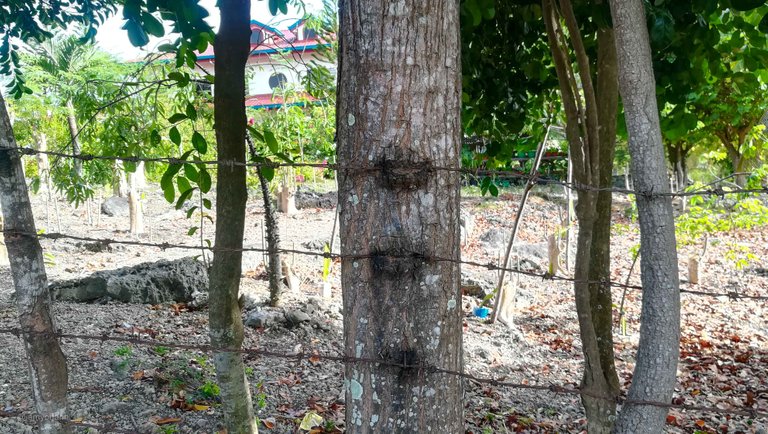
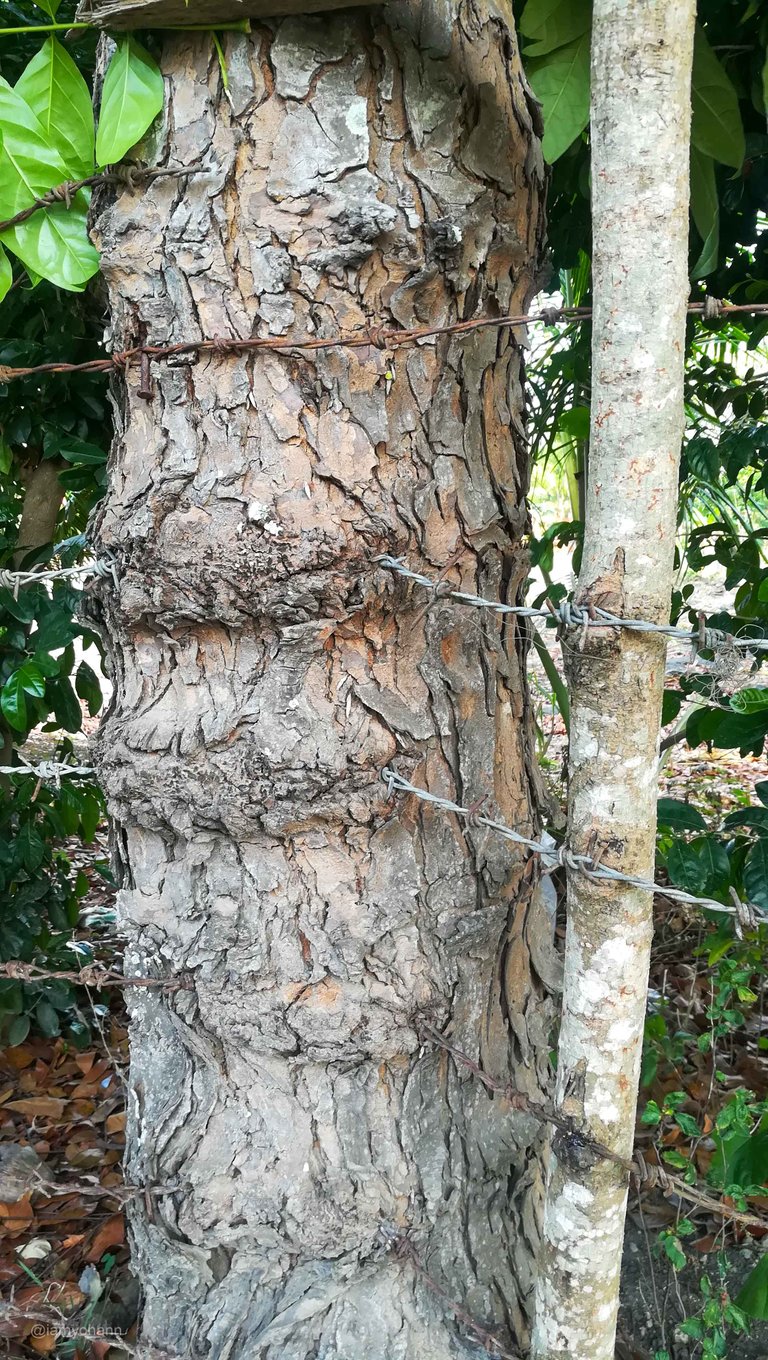
These trees, I believe are mahogany. This wood is very often used in the Philippines to make furniture. Imagine if one day someone decides to cut the trees for the wood. If they don't know about parts of barbwire stuck inside, it'll be interesting to see the piece going through the saw. For the safety of that person, I hope it'll never happen.



The fence is probably about 500m long and most of the trees, if not all of them, have grown around some barbwire. I stopped a couple of hundred meters further for more pictures and noticed that some red ants are actually using the wire to go from one tree to another.

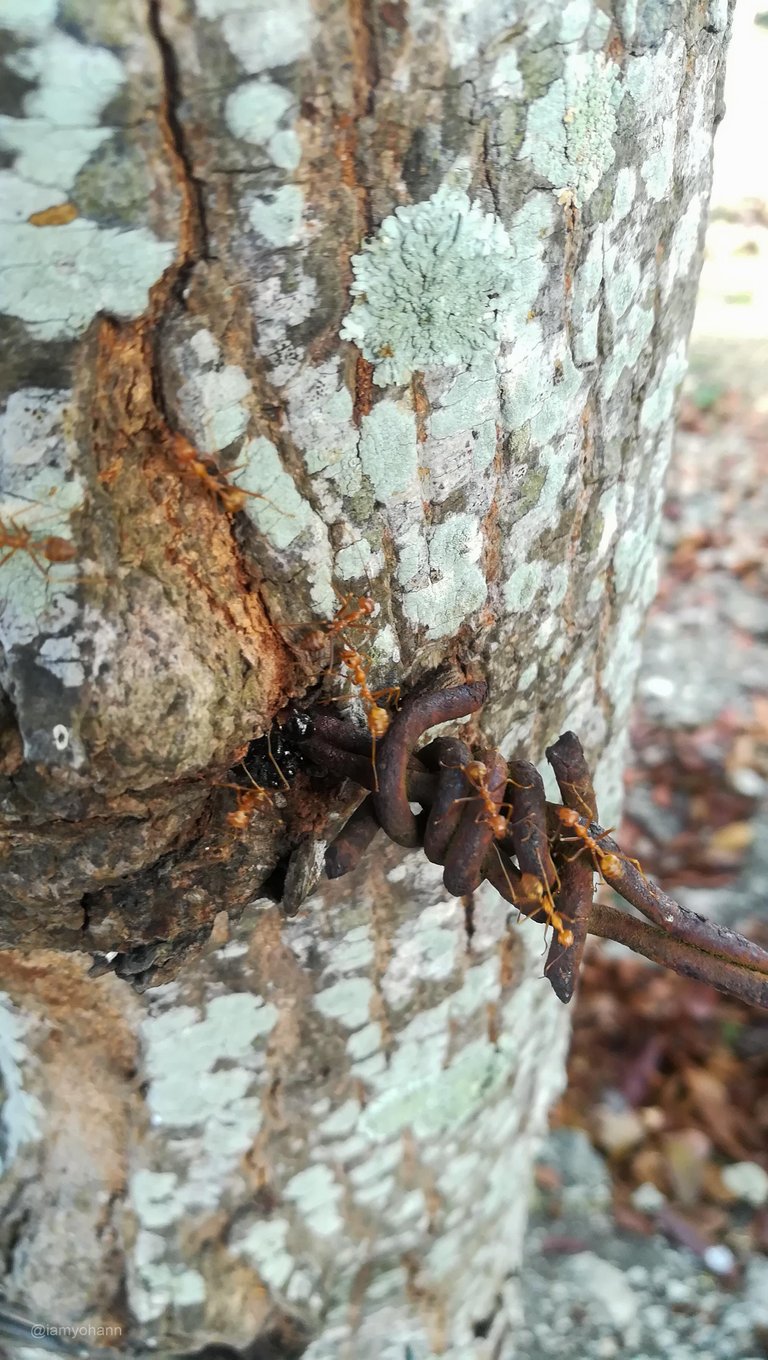
These, I believe, are weaver ants, also called hantik here in the Philippines.
Weaver ants live in trees (they are obligately arboreal) and are known for their unique nest building behaviour where workers construct nests by weaving together leaves using larval silk.
It's difficult to assess it on the pictures having no reference point but they are quite big, about 1cm long
The major workers are approximately 8–10 mm (0.31–0.39 in) in length and the minors approximately half the length of the majors.
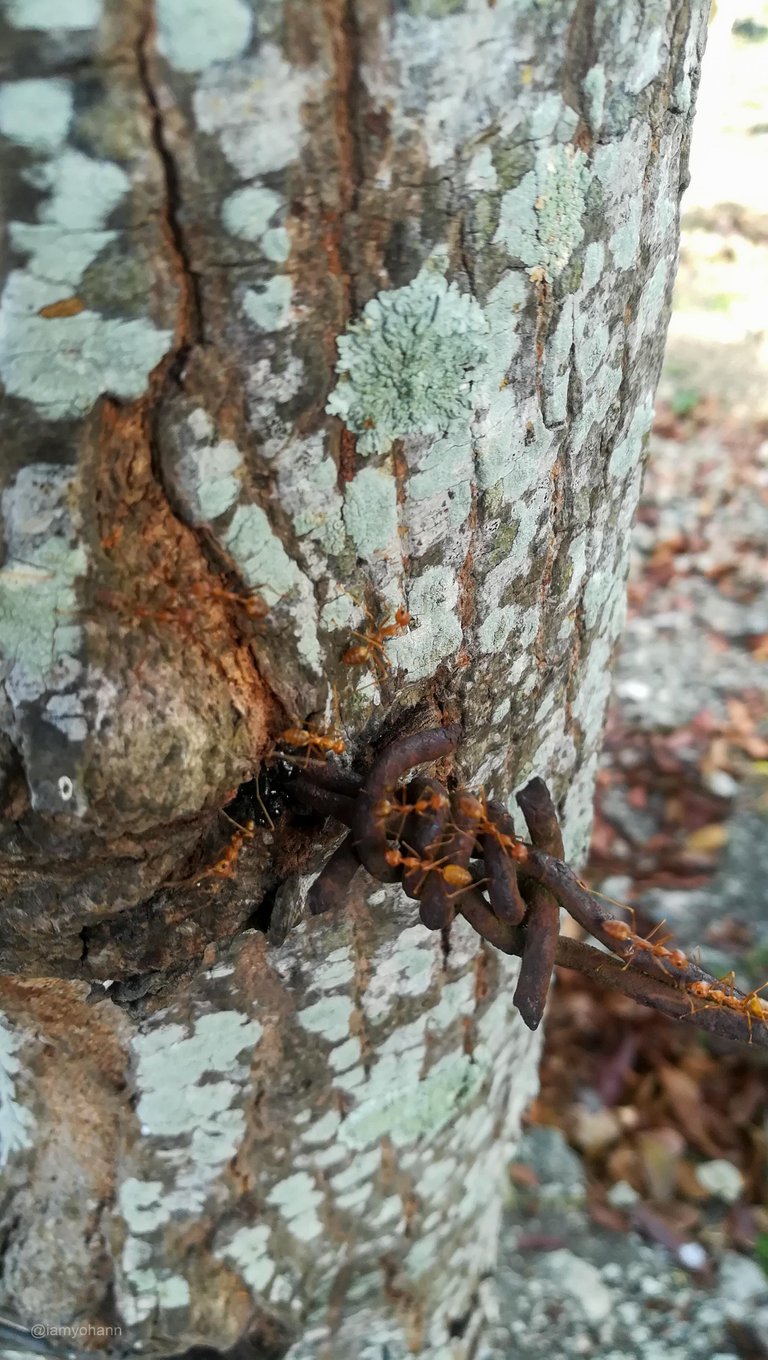
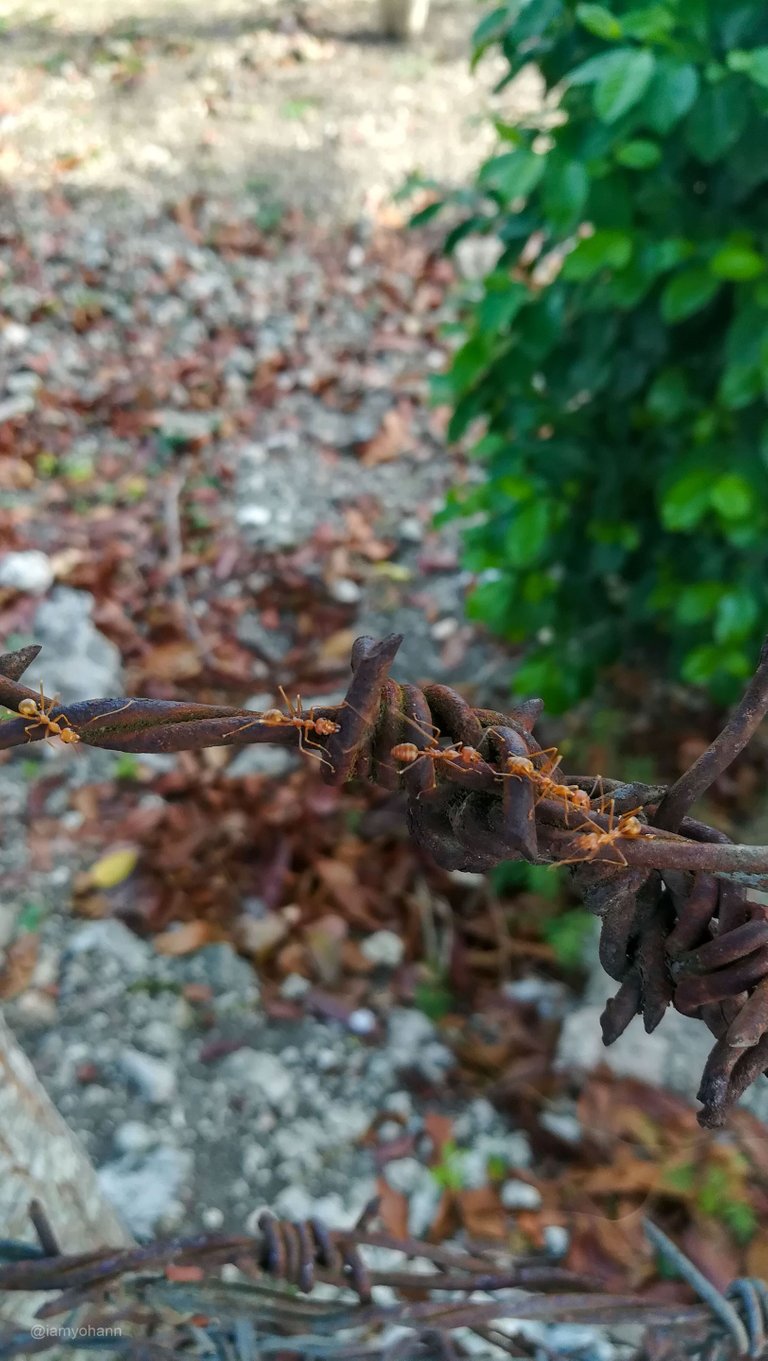
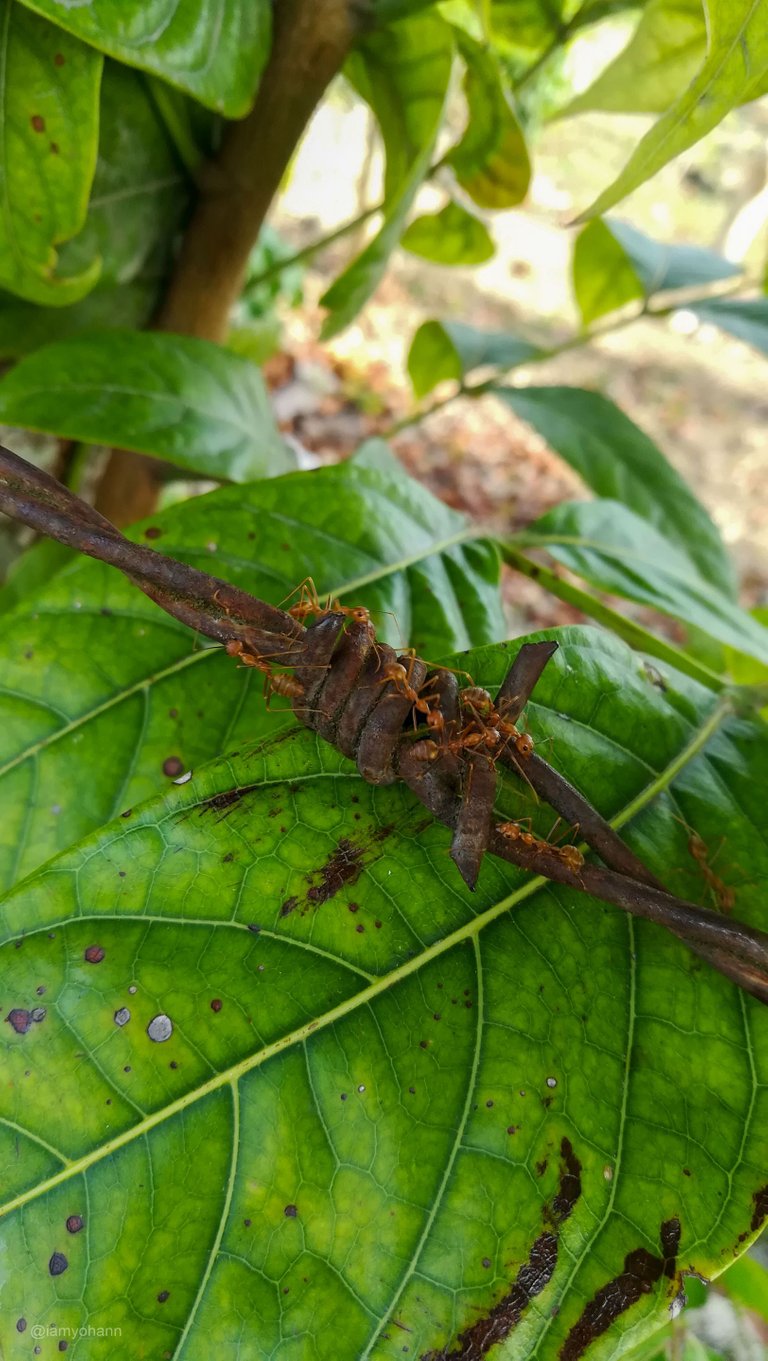
I tried to get my phone as close as possible to get better pictures but I was careful not to get too close and have them run all over my hands.
Although weaver ants lack a functional sting they can inflict painful bites and often spray formic acid directly at the bite wound resulting in intense discomfort.
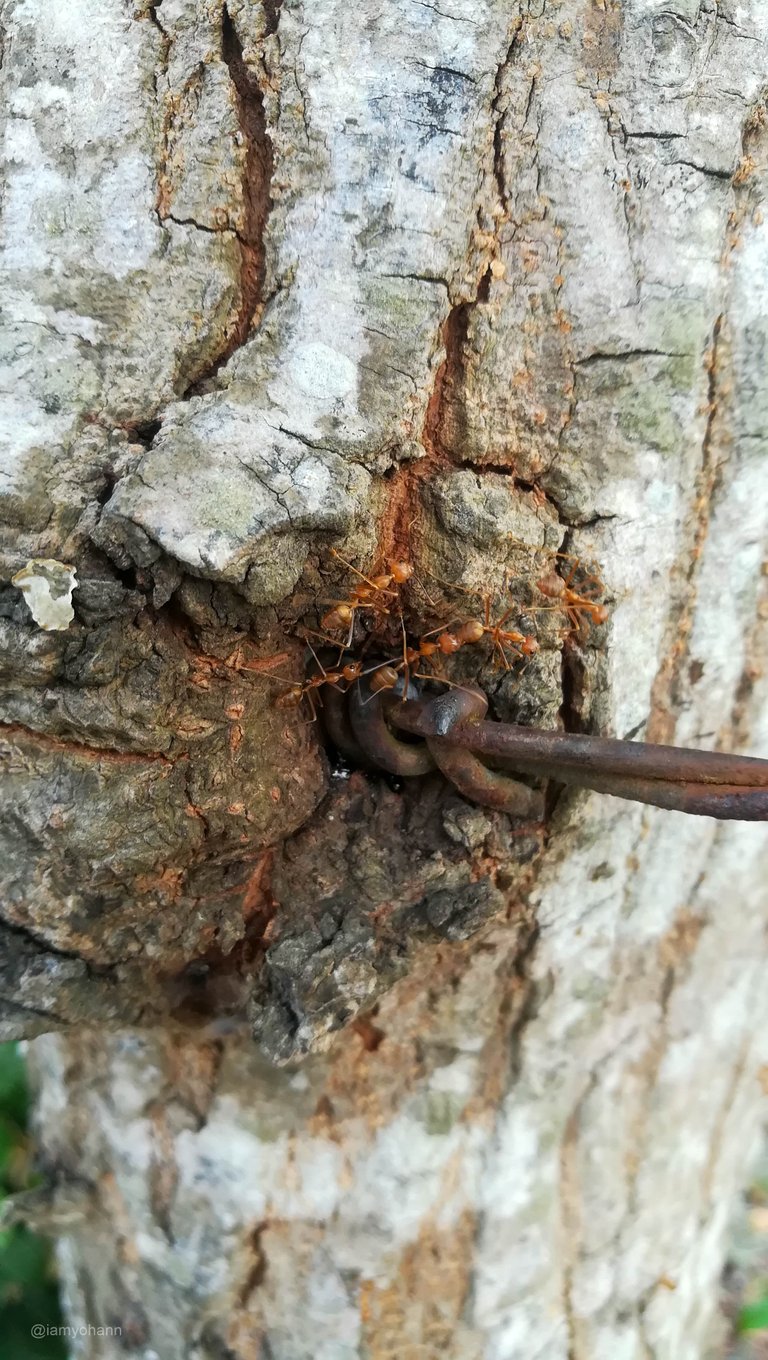
Source for the quotes: Wikipedia
Very good topic "Nature "swallows" our mistakes", and you present the reasons that justify it.
The photos are eloquent and the content of the post as well.
Thanks for sharing, cheers
Thanks very much for your kind feedback and I'm glad you liked the post
poor trees :( -- it does not look healthy for them and this wire also should not get into them .. it would really be a mess if this goes through a saw later!
I agree with you there. Hopefully, they will never be cut down.
We appreciate your work and your post has been manually curated by @redheadpei on behalf of Amazing Nature Community. It will be added to next week’s botany curation post. Keep up the good work!
Excellent observation. Nails and wire into a tree can cause some damage to the tree tissues that move water and nutrients through the tree. Luckily these trees look healthy and have added materials around the wire and nails to strengthen the weak spots.
Thanks a lot for your support, very much appreciated.